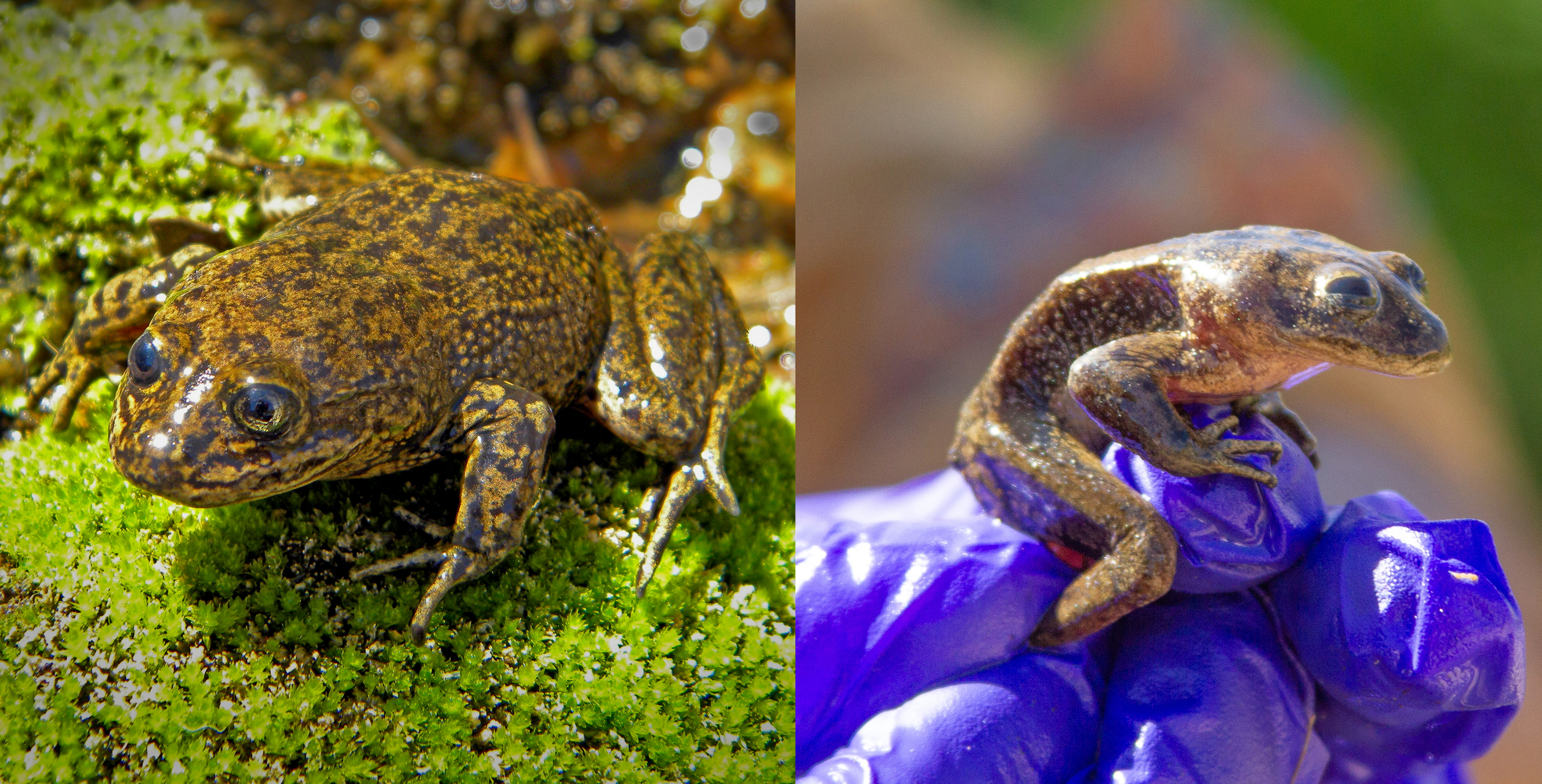
International Wildlife Organizations Call on Chilean Government to Continue Remarkable Efforts By Abolishing Illegal Water Extraction and Protecting Frogs’ Wild Home

August 20, 2019
#SaveTheLoaFrog #SalvemosLasRanitasDelLoa
As part of an unprecedented and swift rescue mission, a team of conservationists and government officials in Chile have evacuated what may be the world’s last-known 14 Loa water frogs (Telmatobius dankoi)—a species considered to be Critically Endangered by The IUCN Red List of Threatened SpeciesTM and found only in a single stream in Chile—just before their habitat dries up almost completely from the illegal extraction of water, leaving the frogs malnourished and barely hanging on.
“I have been deeply impressed by the skill and resolve of the team in Chile acting to prevent the extinction of this species,” said Helen Meredith, executive director of the Amphibian Survival Alliance, which is financially supporting the rescue efforts. “So many critically endangered amphibian species risk slipping away unnoticed because they do not have an active group of people committed to their survival. This gives me great hope for the Loa water frogs—they face an uncertain future but have a group of champions committed to their survival.”
As part of the rescue mission, the animals have been relocated to the National Zoo of Chile, where the zoo’s specialists are trying to nurse them back to health and are talking to water frog experts around the world for tips on how best to care for and eventually breed them. A number of international wildlife organizations—including Amphibian Ark, the IUCN SSC Amphibian Specialist Group, the Amphibian Survival Alliance and Global Wildlife Conservation—are calling on the government of Chile to continue this great work by now protecting and restoring the frogs’ home in the wild.
In late June a team of conservationists, government officials and indigenous leaders discovered that the habitat of the Loa water frog outside of the city of Calama, located in the middle of the Atacama desert, had dried up as the result of extraction of water for mining, agriculture and real estate development, in a region where water is a scarce resource. All of the frogs had been pushed into a tiny pool of muddy water. The team collected the last 14 individuals and brought them to the National Zoo of Chile to start a conservation breeding program.
“The first big challenge is to help these frogs survive and while the rescue was the best chance to save the Loa water frog, there are always risks with trying to care for a new species—especially when the animals are already struggling,” said Alejandra Montalba, director of the National Zoo of Chile, which belongs to the Metropolitan Park of Santiago, a public service of Chile’s Ministry of Housing and Urbanism. “That’s the main goal right now, and later we need to be able to breed them. But ultimately we need to work very hard to restore their environment because it’s pointless to breed them if they don’t have a home to go back to in the wild.”
The international conservation community is ready to help, and specifically encouraging the Chilean government to halt the activities that are threatening the Loa water frog, to restore its habitat and formally protect it as a sanctuary or reserve that is regularly monitored.
“We request that consideration be given to the development of an emergency plan for the protection and recovery of Loa frog habitat,” said Jon Paul Rodríguez, chair of the IUCN Species Survival Commission. “For this reason, we call for the establishment of a technical working group, to assist the work in this matter.”
There are at least 63 known species of water frogs, or Telmatobius species, found from Ecuador to Chile, including in Peru, Bolivia and Argentina. Many of these species, like the Loa water frog, are microendemic, which means they live in just one small place. Water frogs are semi-aquatic or entirely aquatic, making them very sensitive to any changes in their environment. Habitat destruction, pollution, disease and invasive trout are among the biggest threats they face. About 10 species of water frog live in Chile, and many of them are likely facing the same threats as the Loa water frog.

Additional quotes
“Although this is a critically important rescue, it is the first part in a multi-pronged process” said Ariadne Angulo, co-chair of the IUCN SSC Amphibian Specialist Group. “To achieve our shared vision of ‘amphibians thriving in nature,’ there must be nature to return amphibians to, and the Loa water frog is no exception. Losing the small habitat of the Loa water frog means losing the species from the wild, and if captive breeding is not successful, then potentially losing the species completely.”
“Without the zoo, we wouldn’t have made it this far. The situation was so critical, the main habitat was so dry, that the rescue was the only option. If the zoo wouldn’t have had the capacity to do it, the story right now would be very different” added Claudio Soto Azat, co-chair, IUCN SSC Amphibian Specialist Group Chile.

My family members always say that I am killing my time here at web, however I know I am getting know-how all the time by reading such good posts.|